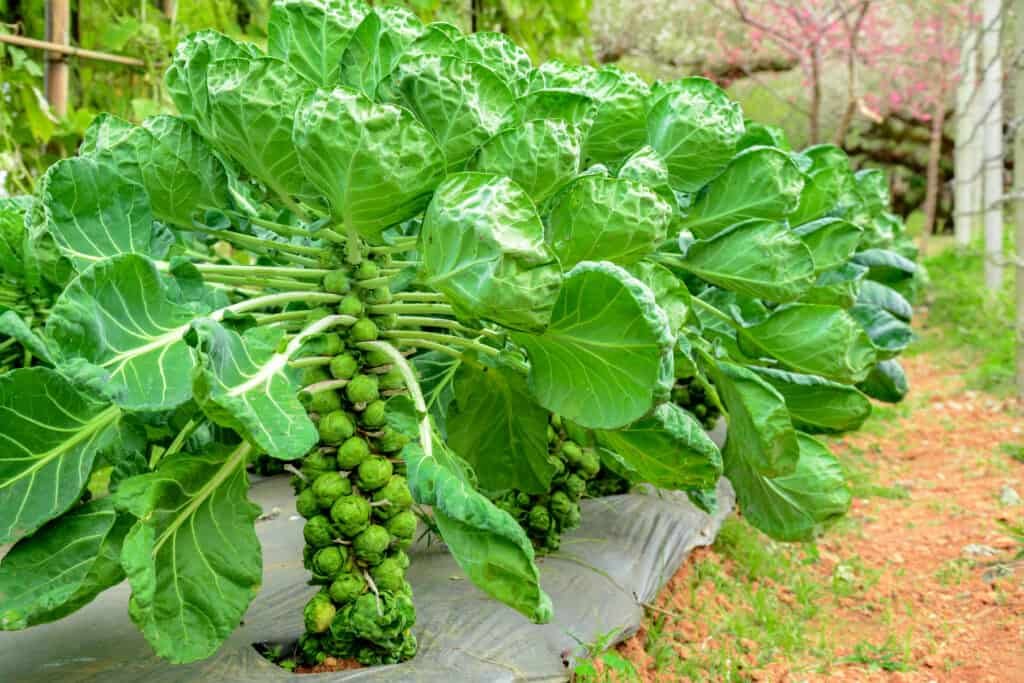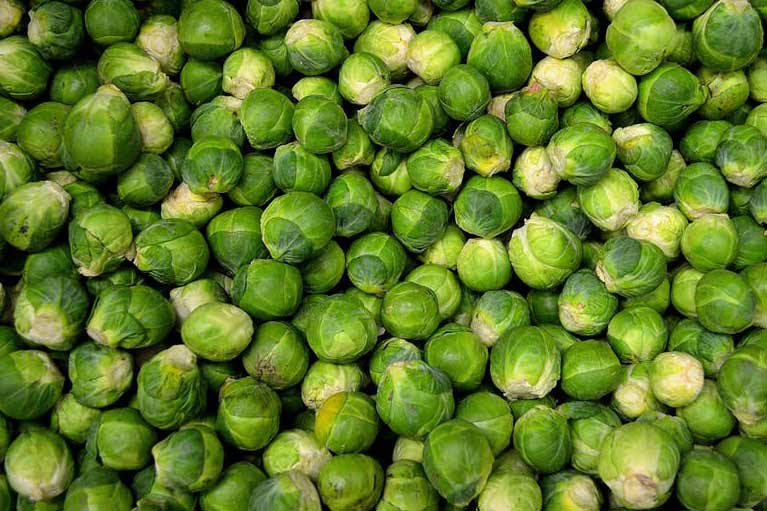
🥦 How to Grow Brussels Sprouts in Your Vegetable Garden
A Step-by-Step, Beginner-to-Advanced Guide to Growing These Mini Cabbage Powerhouses
If you’ve only ever met Brussels sprouts as a mushy side dish from your childhood, it’s time to meet them again—this time, straight from your garden. Fresh, homegrown Brussels sprouts are crisp, nutty, slightly sweet, and completely different from the overcooked versions you may have known. And here’s the best part: they’re easier to grow than you might think, especially once you understand their rhythm and needs.

In this complete guide, we’ll walk you through exactly how to grow Brussels sprouts from seed or transplant, how to care for them through the growing season, when and how to harvest, and what to watch out for along the way. Whether you’re an experienced grower or totally new to this crop, this will help you get a great harvest of delicious sprouts—even on your first try.
🌱 Why Grow Brussels Sprouts?
Brussels sprouts are a cool-weather crop in the brassica family, which also includes cabbage, kale, and broccoli. They take a little time and patience, but the payoff is well worth it.
Here’s why gardeners love them:
- 🧊 Cold-tolerant and frost-hardy: Sprouts actually get sweeter after a frost!
- 💪 Packed with nutrition: Loaded with fiber, vitamin K, and antioxidants.
- 🌿 Great for fall and winter gardens: One of the few crops that thrives in cooler temps.
- 🥬 High-yielding: A single plant can produce 60–100+ sprouts.
📅 When to Plant Brussels Sprouts
Timing is everything with Brussels sprouts. These plants have a long growing season—typically 80 to 100 days—and they do best in cool weather.
🗓 For a Fall Harvest (Most Common):
- Start seeds indoors: 14–16 weeks before your first fall frost.
- Transplant outdoors: When plants are 4–6 weeks old and hardened off.
- Direct sow outdoors: Only in cool regions with long seasons.
🌡️ Ideal growing temperature: 45°F–75°F (7°C–24°C). Sprouts form best when fall temperatures are cool but not freezing.
🧾 What You’ll Need
Before planting, make sure you’ve got the basics ready:
- Brussels sprouts seeds or transplants
- Raised bed, garden rows, or containers (large)
- Well-draining soil rich in compost
- Balanced organic fertilizer
- Mulch (straw or shredded leaves)
- Garden tools (trowel, hand fork)
- Stakes or supports (optional)
- Watering can or hose
🪴 How to Grow Brussels Sprouts: Step-by-Step
:max_bytes(150000):strip_icc()/growing-brussels-sprouts-1403442-04-a01389c1755d49a6a1bd758340ea205a.jpg)
1. Pick the Perfect Spot
Brussels sprouts need full sun—at least 6 hours daily—and room to grow. They’re tall plants (2–3 feet high), so don’t crowd them into small spaces.
2. Prep the Soil
Sprouts love nutrient-rich, well-draining soil with a pH between 6.5–7.5.
- Mix in compost or aged manure before planting.
- Avoid acidic soil or poorly drained areas—sprouts hate wet feet.
3. Start from Seed (or Buy Transplants)
If growing from seed:
- Indoors: Start seeds ¼ inch deep in trays 4–6 weeks before transplanting.
- Keep seedlings under grow lights or in a sunny window.
- Harden off for a week before planting outside.
4. Transplanting Outdoors
- Space plants 18–24 inches apart, in rows 30 inches apart.
- Plant deeply—bury the stems up to the first leaves for sturdier roots.
- Water deeply right after planting.
💧 Caring for Brussels Sprouts Throughout the Season
✅ Watering
- Brussels sprouts need consistent moisture—about 1–1.5 inches per week.
- Avoid watering the leaves; water at the base to prevent disease.
- Mulch around the base to retain moisture and keep soil cool.
✅ Fertilizing
- Side-dress with nitrogen-rich fertilizer about 3–4 weeks after planting.
- Continue feeding every 3–4 weeks, especially during the rapid growth stage.
✅ Mulching & Weeding
- Use organic mulch to suppress weeds and regulate soil temperature.
- Keep weeds under control, especially while plants are young.
✅ Support Tall Plants
Brussels sprouts grow tall and top-heavy, especially late in the season. Stake them if necessary to prevent leaning or tipping.
🌿 How and When to Harvest Brussels Sprouts

Sprouts form in the leaf axils, starting at the bottom of the stalk and maturing upward.
When to Harvest:
- Sprouts are ready when they’re firm, green, and 1–2 inches wide.
- Start checking 90–100 days after transplanting, depending on variety and conditions.
- They taste best after a light frost—the cold improves their sweetness!
How to Harvest:
- Snap or twist off mature sprouts starting at the bottom.
- Work your way up the stalk every few days as new sprouts mature.
- Leave the upper leaves intact until harvest is complete.
💡 Optional tip: Remove the top growth (the apical bud) 3–4 weeks before final harvest to encourage the plant to focus on sprout development.
🌬️ Can Brussels Sprouts Survive Winter?
Yes! In many regions, Brussels sprouts can survive well into winter, especially with some mulch protection. A light frost improves flavor, but deep freezes may damage the plant if not protected.
In very cold zones, use row covers or cold frames to extend your harvest into early winter.
🐛 Common Pests & Problems (And How to Fix Them)
Brussels sprouts belong to the brassica family, so they attract some common pests.
| Problem | Symptoms | Solution |
|---|---|---|
| Cabbage worms | Holes in leaves, green worms | Handpick or spray with neem oil or BT |
| Aphids | Clusters on leaf undersides | Spray with insecticidal soap or strong water blast |
| Clubroot | Swollen, deformed roots | Rotate crops; avoid planting in same spot yearly |
| Black rot | Yellowing leaves with dark edges | Improve air flow; avoid overhead watering |
| Bolting (rare) | Flower stalks appear | Happens in heat; plant at correct time |
✅ Keep your garden clean, rotate crops yearly, and encourage natural predators like ladybugs to keep pests under control.
🌼 Companion Planting Tips

Brussels sprouts love company—just the right kind.
Best companions:
- Aromatic herbs like thyme, dill, and rosemary (repel pests)
- Beets, celery, and onions
- Marigolds (deter nematodes and aphids)
Avoid planting with:
- Strawberries, tomatoes, or pole beans—they compete for nutrients and space.
Table of Contents
❓ Frequently Asked Questions
Q: Can I grow Brussels sprouts in containers?
Yes, but it’s a challenge. Use a large container (at least 18 inches deep), and ensure consistent watering and nutrients. One plant per pot is best.
Q: Why are my Brussels sprouts not forming?
This could be due to:
- Too much nitrogen (all leaves, no sprouts)
- Warm weather during sprout development
- Lack of space or sun
Focus on timing and spacing, and avoid overfeeding with nitrogen.
Q: Can I eat the leaves?
Absolutely! Young Brussels sprout leaves are edible and taste like a milder version of collards or kale.
Q: How long does it take to grow Brussels sprouts?
From transplant to harvest, it usually takes 90–100 days. From seed, expect about 120–140 days total.
Q: Will Brussels sprouts come back next year?
No, they are biennials, but usually grown as annuals. They complete their life cycle in one season when grown for sprouts.
✅ Conclusion: Brussels Sprouts Are Worth the Wait
Brussels sprouts aren’t a fast crop—but they’re one of the most rewarding and unique vegetables you can grow. Once you master the timing and care, you’ll enjoy the sight of tall green stalks bursting with compact, flavorful sprouts—just in time for your holiday dinners or hearty winter meals.
By planting them at the right time, giving them enough space, and staying consistent with care, you can grow a bountiful harvest of Brussels sprouts even in a small backyard garden. Plus, growing your own means you get to enjoy them at their absolute freshest—roasted, sautéed, or even raw in slaws.
So go ahead, give Brussels sprouts a second chance—they just might become your garden’s next MVP. 🥦💚
🧾 Quick Brussels Sprouts Growing Cheat Sheet
| Task | Details |
|---|---|
| Best Time to Plant | 14–16 weeks before first fall frost |
| Days to Maturity | 90–100 days after transplanting |
| Soil Needs | Rich, well-draining, pH 6.5–7.5 |
| Sunlight | Full sun (6+ hrs daily) |
| Spacing | 18–24 inches apart |
| Watering | 1–1.5 inches per week |
| Fertilizing | Every 3–4 weeks with balanced or nitrogen feed |
| Harvest Time | When sprouts are 1–2 inches, bottom-up |
| Frost Tolerance | High—improves taste after frost |
| Pest Management | Watch for cabbage worms, aphids, black rot |
